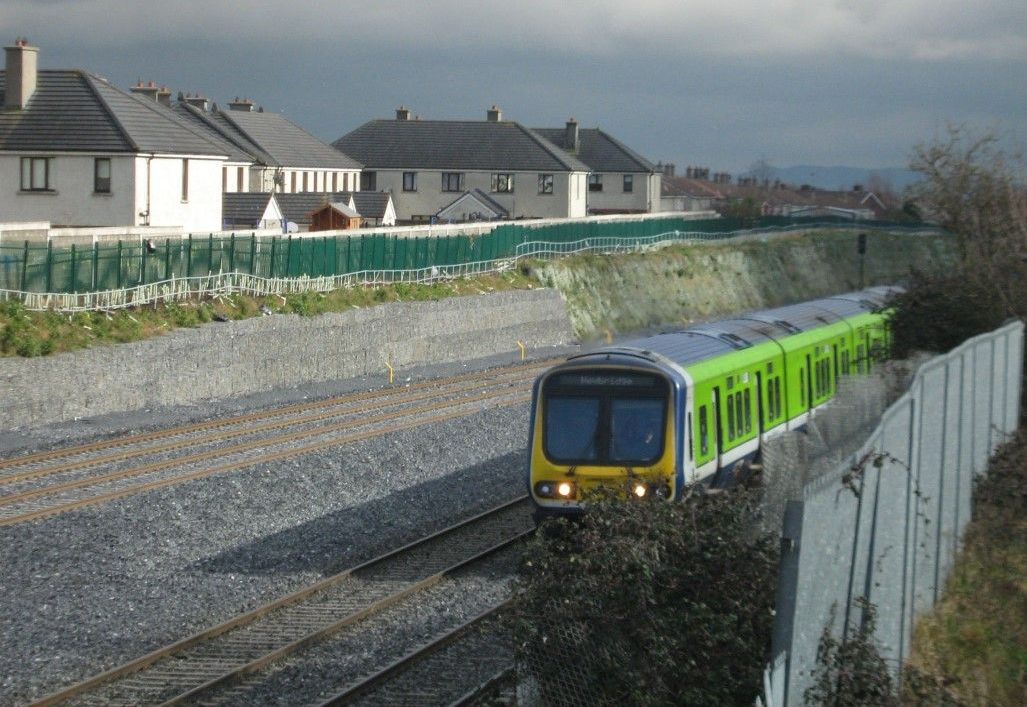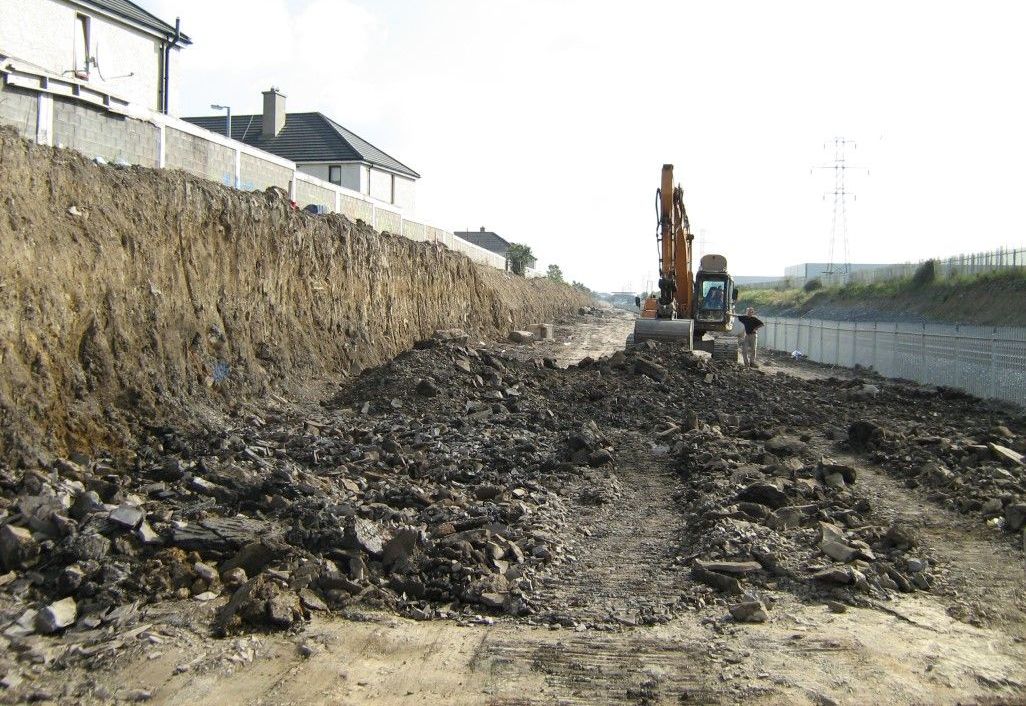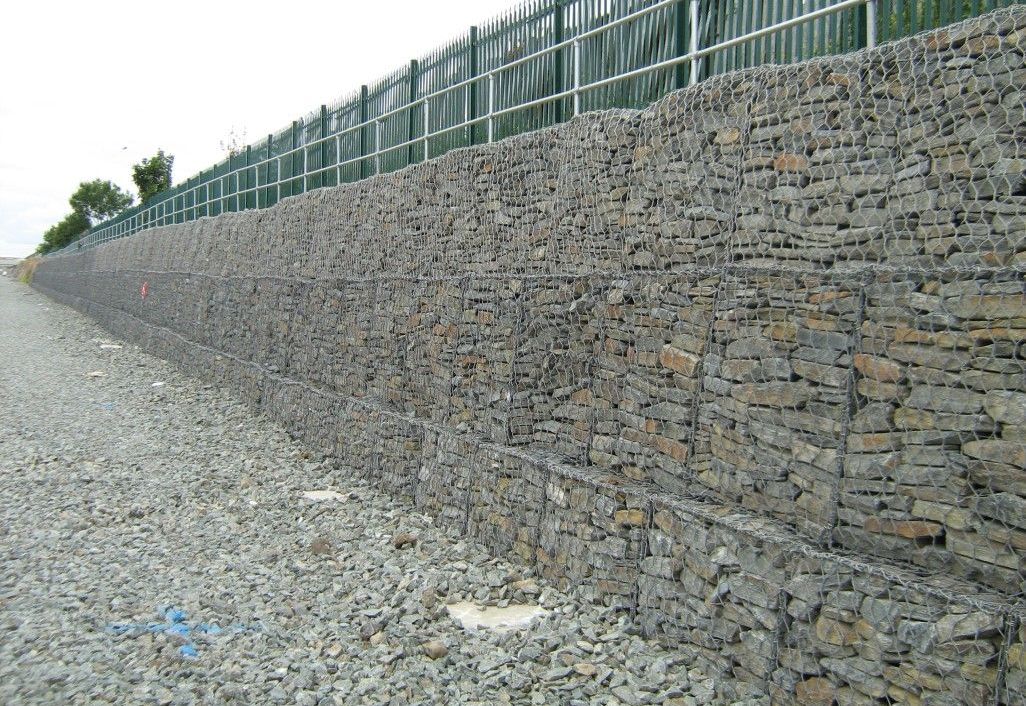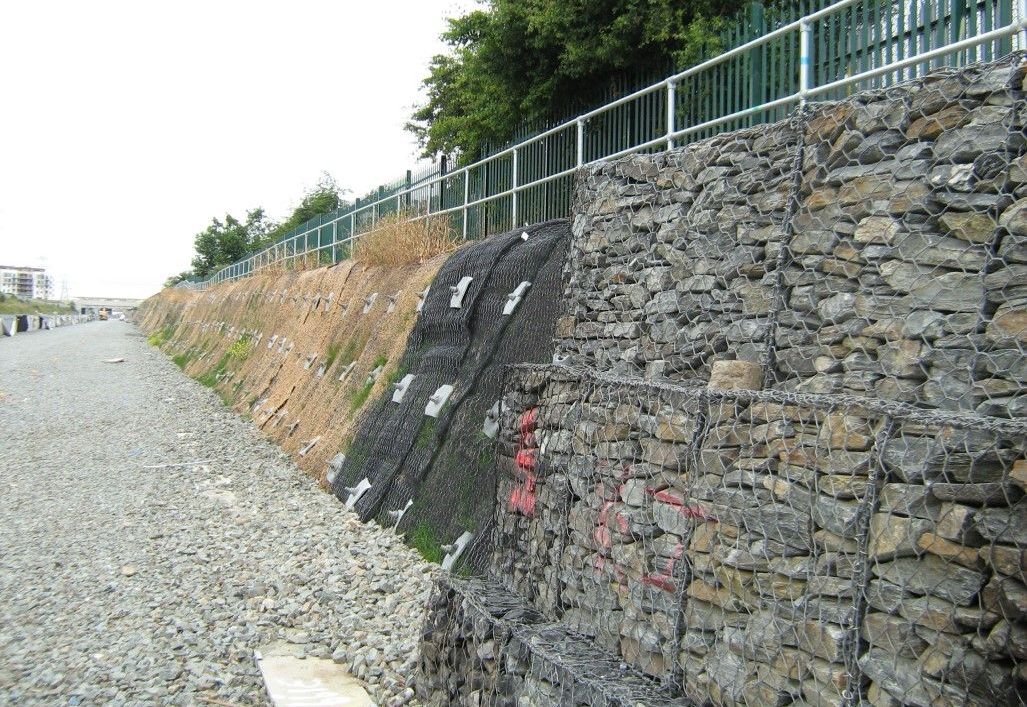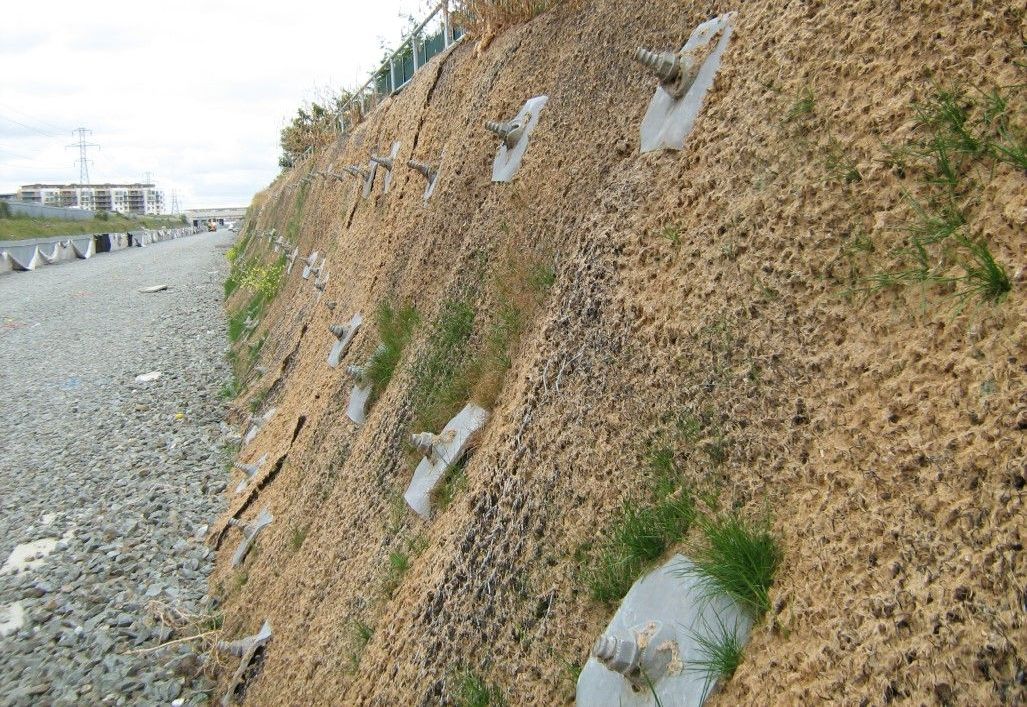Mass Gravity Retaining Walls
CHERRY ORCHARD - DUBLIN - Ireland
Iarnrod Eireann (Irish Rail)
Siac Construction Ltd & Albion Drilling
Siac Construction Ltd
KILDARE ROUTE: IRELANDS TRANSPORT 21 SCHEME
Problem
The Kildare Route Project has its origins in Ireland’s National Development Plan which identifies the need to invest in public transport and in particular to improve the quality, speed and reliability of rail services, to reduce private car usage.
The project facilitates the provision of new commuter stations as well as the upgrading of existing stations. It will also deliver improved transport services to Kildare, Carlow and Laois.
The Kildare Route was looking for various types of retaining structures as these were needed along the new track alignment.
The solution was dependent on available space and material that could be retained. In this location to the south of the centre of Dublin, the railway was to be widened from 2 tracks to 4 tracks.
Solution
Byrne Looby and Partners were engaged by main contractor Siac Ltd, to value engineer the originally designed proposals as detailed on the project drawings.
Multiple types of retaining structures had been detailed depending on available space and material retained along the new track alignment. This included a concrete crib, sheet piles and king-pile/shutter retaining systems. Byrne Looby approached Maccaferri for assistance in the selection of suitable alternative retaining systems. Where concrete crib was detailed, Maccaferri proposed gabions. These were accepted due to cost savings, plus the time to install was similar.
The gabion walls were typically used at pinch points and where the retained material was made ground. In certain areas, the ground to be retained was suitable for reinforcement by soil nailing. Byrne Looby designed a soil nail solution to structurally reinforce the 60-degree slopes. MacMat® R was detailed as the fascia to the soil-nailed slopes.
MacMat® R and soil nails, in conjunction with decent topsoil, create a vegetated face finish. In this project, the MacMat® R face was hydro seeded to accelerate the establishment of vegetation. Successful vegetation relies upon intimate contact between the MacMat® R and the topsoil beneath.
As vegetation develops through the mesh, the mesh reinforces the rootsystem of the plants, enhancing the binding function of the vegetation on the topsoil.
